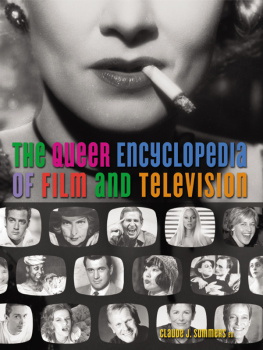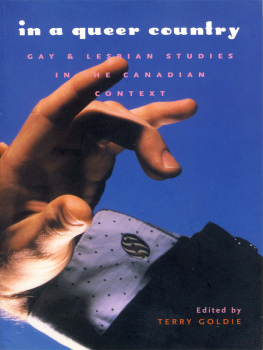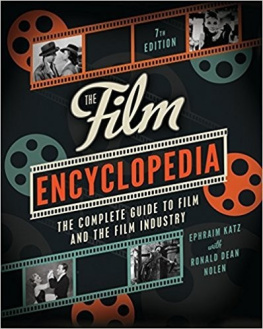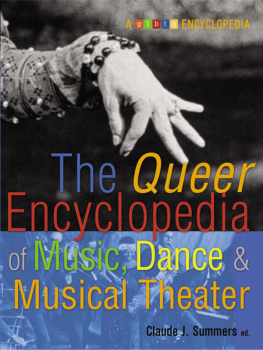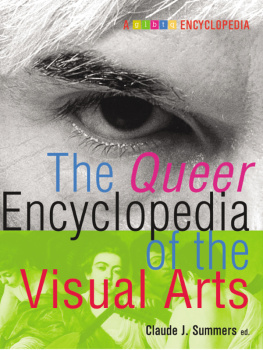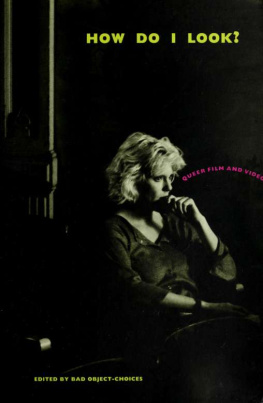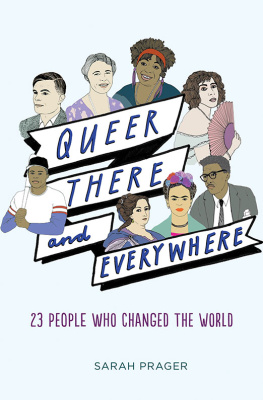The Queer Encyclopedia of Film & Television
Claude J. Summers
Editor
Copyright 2005 by glbtq, Inc.
All rights reserved. Except for brief passages quoted in newspaper, magazine, radio, or television reviews, no part of this book may be reproduced in any form or by any means, electronic or mechanical, including photocopying or recording, or by information storage or retrieval system, without permission in writing from the Publisher.
Published in the United States by Cleis Press Inc.,
P.O. Box 14697, San Francisco, California 94114.
Printed in the United States.
Cover design: Scott Idleman
Cover photograph: Photograph of Marlene Dietrich my John Kobal Foundation/Hulton Archives and used with kind permission of Peter Riva. Photograph of Paul Lynde used with kind permission of Michael Airington. Photograph of Ellen DeGeneres used with permission of WireImage.
Book design: Karen Quigg
Cleis Press logo art: Juana Alicia
First Edition.
10 9 8 7 6 5 4 3 2 1
Archives, libraries, service bureaus, and individuals have been indispensable in providing access to the images that illustrate The Queer Encyclopedia of Film & Television. These organizations and individuals deserve particular thanks. Archiv fr Sexualwissenschaft for granting access to the still from Anders als die Andern on page 125. Algonquin Books for providing the image of Tab Hunter on page 177. Barbarahammerfilms.com for providing the image of Barbara Hammer on page 169. Beach Front Bookings for providing the image of Kate Clinton on page 181. Robert Benevides for providing the image of Raymond Burr on page 57. Clipart.com for providing the image of Jean Cocteau on page 75, the image of Marlene Dietrich on page 92, and the image of Errol Flynn on page 152 (Copyright 2003-2005, Clipart.com). The office of Bill Condon for providing the image of him on page 77. Department 56 for providing the image of Sandra Bernhard on page 47. Arthur Dong for providing the image of himself and Robert Shepard on page 98 and the image of himself on page 100. Lynne Fernie for providing the animation still from Apples and Oranges on page 121. Bruce LaBruce for providing image of himself on page 194. Library of Congress Prints and Photographs Division for providing the image of Dorothy Arzner and Marion Morgan on page 33, the image of Montgomery Clift on page 73, the image of Greta Garbo on page 158, the image of Rock Hudson on page 176, the image of Charles Laughton on page 197, the image of Jean Marais on page 208, the image of Agnes Moorehead on page 214, the image of Mauritz Stiller on page 265, and the image of Andy Warhol and Tenneessee Williams on page 286. The office of Richard Hatch for providing the image of him on page 14. Jack Nichols for providing the image of himself, Frank Kameny, and George Weinberg on page 11. Franois Orenn for providing the image of Jean-Daniel Cadinot on page 62. Special thanks to Stathis Orphanos for providing the image of Clive Barker on page 45, the image of James Broughton on page 55, the image of Mart Crowley on page 81, the image of George Cukor on page 83, the image of James Bridges and Jack Larson on page 140, the image of John Schlesinger on page 250, and the image of Gavin Lambert on page 252. Panacea Entertainment for providing the image of Richard Chamberlain on page 67. Ken Phillips Publicity Group for providing the image of Margaret Cho on page 72. Patricia Rozema for providing the image of herself on page 245. RuCo, Inc. for providing the image of RuPaul on page 248. TLA Releasing for providing the promotional poster art for Bulgarian Lovers on page 180. Ulrike Ottinger Filmproduktion for providing the image of Ulrike Ottinger on page 227. The office of Christine Vachon for providing the image of her on page 278. The office of John Waters for providing the image of him on page 289. Andrea Weiss for providing the image of herself on page 293. William Morris Agency for providing the image of Craig Lucas on page 202.
LIBRARY OF CONGRESS CATALOGING-IN-PUBLICATION DATA
The queer encyclopedia of film and television / Claude J. Summers, Editor.
p. cm.
Includes bibliographical references and index.
ISBN 1-57344-209-7 (pbk. : alk. paper)
1. Gays in the performing artsBiographyDictionaries. 2. GaysBiographyDictionaries.
I. Summers, Claude J.
PN1590.G39Q44 2005
790.2'086'64dc22
eISBN: 978-5-57344-882-6
2005015928
For Ted, again;
and for Wik, the onlie begetter,
and for Robert Herndon and Linda Rapp
ACKNOWLEDGMENTS
A collaborative project of the scope of The Queer Encyclopediaof Film & Television necessarily depends on the kindness and cooperation of numerous individuals, including especially the authors of the articles.
I owe most to Andrew Wik Wikholm, President of glbtq, Inc., whose vision and commitment and enthusiasm have made this book possible. Ted-Larry Pebworth has been a supportive partner and collaborator in many ways beyond the indexing and copyediting skills that he has deployed in this project. Linda Rapp, friend and assistant, has generously contributed her time, energy, and expertise.
I am grateful to all those who offered advice and made suggestions, especially as to topics and contributors. Gary Morris, Patricia Juliana Smith, and Mark McLelland have been especially helpful as members of the www.glbtq.com advisory board. Michael Tanimura, production manager at glbtq, discovered a number of inconsistencies and errors and knew how to correct them. Betsy Greco, glbtq project administrator, has been unfailingly efficient and cheerful. The sharp-eyed and informed staff at Cleis Press has been a joy to work with. I am especially grateful to Mark Rhynsburger.
Work on this project has been sustained by the interest and support of numerous friends, including Roberts Batson, Albert Carey, Barry Cazaubon, Neil Flax, Robert Herndon, George Koschel, and Robert McCabe. I am also grateful to my friends John Edward and Willene Hardy and Gary and Mary Ann Stringer, who provided shelter from Hurricane Katrina and facilitated the final preparations of this book.
Introduction
THE QUEER ENCYCLOPEDIA OF FILM & TELEVISION introduces a remarkably rich and varied cultural achievement. It surveys the contributions of gay, lesbian, bisexual, transgender, and queer people to film and television and also their representation in and sometimes vexed relationship to these media. That is, this work is interested in glbtq individuals not only as actors, directors, screenwriters, television performers, and producers, but also as subjects, objects, and consumers of the popular arts. There are articles on Film Spectatorship as well as on Film Sissies, on Stereotypes as well as on American Television Situation Comedies.
As Mark Finch writes in the overview of Film included in this volume, It is a part of popular cultural mythology that homosexuals are meant to be obsessed with Hollywoodall those queens crying for Judy, dykes swooning for Garbo. What is much less remarked upon is precisely the reverse: Hollywoods obsession with homosexuality. Among other topics, this book is interested in popular cultures varied and evolving constructions of homosexuality.
The history of the representation of sexual minorities by film and television and other popular entertainments is a fascinating subject. Such a history not only reveals the majoritys complex, ambiguous, and shifting attitudes toward sex and sexual minorities, but it also witnesses to the myriad ways in which gay men and lesbians alternately absorbed, resisted, challenged, and modified the prejudices of the dominant society, while also utilizing popular culture as a means of queer engagement, finding in it opportunities for identity building and sub-cultural exchange.

